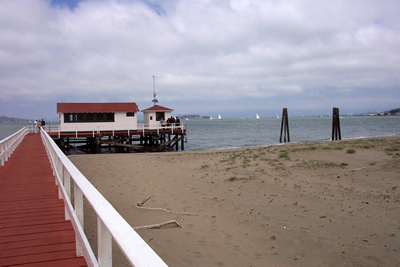Changing Planet: Ocean Temperatures
Observations document that the Earth's ocean is warming. As the ocean warms, it will also expand in volume, causing sea level to rise. This rise is in addition to the sea level rise that results from water added from melting ice and snow that comes from land-based sources. Today, there are large human populations living in coastal areas worldwide that will be affected by rising sea level.
Click on the video at the left to watch the NBC Learn video - Changing Planet: Ocean Temperatures.
Lesson plan: Changing Planet: Rising Ocean Temperatures - Rising Sea levels
You might also be interested in:

Measuring sea level, the level of the ocean surface, continually over many years allows scientists to calculate whether sea level is changing. This helps us to understand how much sea level rise is happening
...more
The world's surface air temperature increased an average of 0.6° Celsius (1.1°F) during the last century according to the Intergovernmental Panel on Climate Change (IPCC). This may not sound like very
...more
Many educators are now finding opportunities to teach about Earth's climate and climate change in their classrooms. Windows to the Universe provides an interlinked learning ecosystem to a wealth of resources
...more
Looking for online content that can be used for a climate change education course or module? Pages linked below can be used to support an introductory climate change education for either a unit or a full
...more
Altocumulus clouds (weather symbol - Ac), are made primarily of liquid water and have a thickness of 1 km. They are part of the Middle Cloud group (2000-7000m up). They are grayish-white with one part
...more
Altostratus clouds (weather symbol - As) consist of water and some ice crystals. They belong to the Middle Cloud group (2000-7000m up). An altostratus cloud usually covers the whole sky and has a gray
...more
Cirrocumulus clouds (weather symbol - Cc) are composed primarily of ice crystals and belong to the High Cloud group (5000-13000m). They are small rounded puffs that usually appear in long rows. Cirrocumulus
...more














